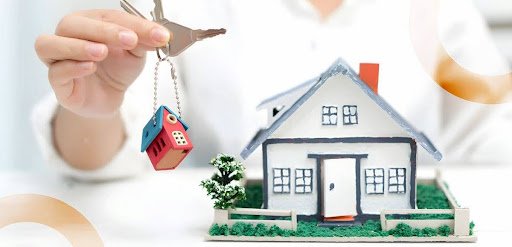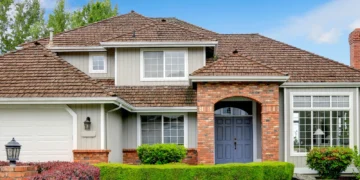With the environmentally aware property market of today, sustainability now plays a significant role in development and investment choice. BREEAM assessments are the world’s most widely used science-based verification approach to measuring and enhancing a building’s environmental performance. These thorough inspections quantify sustainability on many parameters from energy efficiency to ecological footprint, giving an all-encompassing framework for creating greener buildings.
As concerns over climate change intensify and the regulations become more stringent, such assessments provide building owners with a systematic guide to optimise sustainability while developing asset value. This article discusses eight prime avenues through which BREEAM certification ensures substantial environmental enhancement of buildings, illustrating why it’s now the UK and global gold standard for sustainable development and property management.
Energy Efficiency Optimisation:
BREEAM’s approach thoroughly analyses a building’s energy performance, promoting designs that use less energy while increasing efficiency. The audit rewards points for efficient HVAC systems, smart metering installations, and integrating renewable energy. Buildings are subjected to advanced energy modelling at the design phases in order to determine optimisation potential.
At the end of the tune, actual performance is checked against the forecast. This approach generally cuts energy consumption by 25-50% from that in traditional buildings. The evaluation also encourages passive design solutions such as optimal orientation and natural ventilation. Ongoing monitoring requirements ensure the buildings remain efficient over their life cycle. For existing buildings, BREEAM reveals retrofit opportunities providing the fastest returns on investment on energy savings.
Water Conservation Strategies:
The water category encourages profound reductions in use of potable water through innovative measure and conservation strategies. Low-flow fixtures and water-saving appliances, leak detection system are rewarded with credits. The evaluation supports rainwater harvesting and greywater recycling systems that can cut demand for main water by up to 50%. Landscape design specification support drought-resistant vegetation and low-water irrigation. In commercial premises, the system assesses water monitoring systems that can detect abnormal consumption. It also takes into account the embodied water within the construction materials, promoting specifying products with lower water-intensive production processes. These combined measures minimise pressure on local water resources and reduce
Sustainable Material Selection:
The tests revolutionise material specification processes by measuring environmental impacts throughout the lifecycle of a product. The initiative offers incentives for the use of materials with good recycled content, low embodied carbon, and responsible sourcing credentials. Credits are earned from adopting material efficiency measures that reduce waste during construction.
The methodology involves documentation to demonstrate sustainable sourcing of critical materials such as wood, which meets FSC or similar standards. The methodology also encourages locally sourced materials in order to limit transport emissions for renovation and promotes recycling of in-place structural components. These requirements stimulate marketplace demand for more environmentally friendly building materials and minimise the overall environmental impacts of projects.
Minimise the Ment Improvements:
The waste category covers construction and operational waste streams using whole-building waste management plans. On-site projects must show high percentages (usually 90 %+) of dive90 %+n from landfill via recycling and reuse prog90 %+. The evaluation involves pre-provisioned space for various waste streams in order to enable separation. It includes such facilities as tenant facilities, cycling facilities, and waste monitoring systems for operational waste.
Credits are obtained through the reduction of packaging waste in material deliveries and the application of circular economy strategies. The system promotes design solutions that minimize future demolition waste, including modular construction, and minimize material passports. These actions greatly decrease the contribution of the property sector to landfills and recover valuable resources.
Ecological Landfills and Enhancement:
The process requires careful consideration of the ecological footprint of a development through all stages of the project. Ecological pre-construction surveys spot protected species and habitats to be conserved. The assessment positively rewards designs that include biodiversity improvements such as green roofs, wildlife corridors, and native landscaping. A minimum of 10% biodiversity net gain is usually needed for better ratings. The system ensures proper ecological management plans are put in place during building construction to avoid habitat destruction. After construction, long-term ecological management plans preserve and track biodiversity gains. These measures reverse the loss of habitat while establishing healthier conditions for building users and wildlife.
Health and Wellbeing Considerations:
The evaluations place occupant health at the top of their agenda using stringent indoor environmental quality specifications. The approach tests daylight provision, ventilation rates and volatile organic compound (VOC) content in materials. Acoustic performance is specified to protect against undue noise pollution. Biophilic design features that help occupants stay in touch with nature are promoted by the evaluation. Thermal comfort standards keep optimal temperatures year-round.
Conclusion:
BREEAM certification gives an all-year-round, evidence-based method of improving property sustainability in all measurable terms. From water and energy efficiency to environmental protection and occupant health, the assessment model promotes sustained improvement in building performance. With sustainability moving from an attractive feature to a mandatory requirement, such assessments provide property professionals with a reliable framework for future-proofing their assets.
The tangible advantages, such as lower operating costs, enhanced asset value, and improved occupant satisfaction, are the reasons why BREEAM has emerged as the sustainability certification system of choice for visionary developers worldwide. For any property professional who truly cares about environmental performance, comprehension and application of BREEAM principles is no longer discretionary; it’s a must for long-term success in a more sustainability-conscious marketplace.
























